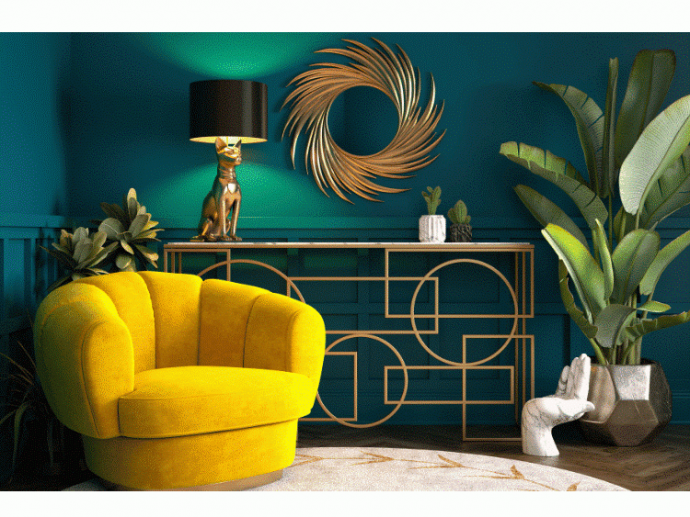Categories more
- Adventures (16)
- Arts / Collectables (15)
- Automotive (37)
- Aviation (10)
- Bath, Body, & Health (75)
- Children (6)
- Cigars / Spirits (30)
- Cuisine (16)
- Design/Architecture (19)
- Electronics (12)
- Entertainment (4)
- Event Planning (3)
- Fashion (44)
- Finance (9)
- Gifts / Misc (6)
- Home Decor (44)
- Jewelry (39)
- Pets (3)
- Philanthropy (1)
- Real Estate (12)
- Services (22)
- Sports / Golf (14)
- Vacation / Travel (60)
- Watches / Pens (14)
- Wines / Vines (24)
- Yachting / Boating (15)
Creating a Home That Inspires: Design Tips for High-Performance Living
Published
06/12/2025Our homes have become more than just places to rest. They are our workspaces, our gyms, our sanctuaries. For entrepreneurs and high performers, the right home environment can fuel creativity, productivity, and well-being. Creating a home that inspires isn’t about flashy decor or hefty budgets. It’s about thoughtful design, wise choices, and curating a space that works as hard as you do.
Understand How Space Influences Mindset
Your environment has a profound impact on your state of mind. Cluttered, chaotic spaces can make you feel overwhelmed and unfocused. Clean, intentional design, on the other hand, can boost mental clarity and motivation. Start by identifying how you use each area of your home. Is your office designed for deep focus? Does your kitchen encourage healthy habits? Does your bedroom help you truly relax?
Prioritize Natural Light and Airflow
Natural light doesn’t just make a room look better; it improves mood, enhances focus, and helps regulate sleep cycles. Arrange workspaces near windows when possible. If natural light is limited, consider daylight-mimicking LED bulbs to keep your circadian rhythm in check. Likewise, good airflow keeps your home feeling fresh and supports cognitive performance.
Create Zones for Specific Activities
Whether you live in a sprawling house or a studio apartment, zoning your space is essential for high-performance living. Designate clear areas for work, rest, exercise, and creativity. This psychological separation helps your brain shift gears more effectively and avoid burnout.
A simple corner with a yoga mat and resistance bands can become your home gym. A reading chair by the window can become your mental recharge zone. The key is to give each activity its own "home" within your home.
Invest in Ergonomic Design
Entrepreneurs often spend hours at their desks, making ergonomic design critical. Invest in a high-quality chair that supports good posture. Your desk should be at elbow height when seated, and your screen should be at eye level. Ergonomics extend beyond the office: choose sofas with proper lumbar support, mattresses that suit your sleep style, and kitchen setups that make cooking comfortable and efficient.
Embrace Minimalism, But Make It Personal
Minimalist interiors are popular for a reason. They reduce distractions and promote calm. But a home devoid of personality can feel cold. The trick is to simplify while still including pieces that reflect who you are. Curate a few meaningful items: a framed photo, a travel memento, or a piece of art that speaks to you.
One great way to personalize your space is through artwork. Statement pieces that reflect your values or aspirations can act as daily reminders of your goals. For example, selecting a bold, motivational piece from The GOAT Wall Art can inject both style and purpose into your home office.
Focus on Sensory Design
Design isn’t just visual. High-performance living means engaging all your senses. Think about how your home smells, sounds, and feels. Use essential oil diffusers for calming scents, invest in quality speakers for ambient playlists, and add tactile fabrics like plush throws or textured cushions. Sensory design supports both productivity and relaxation by shaping how you feel within your environment.
Keep Technology Purposeful
Smart home technology can support performance when used intentionally. Use tools like automated lighting, white noise machines, or smart thermostats to optimize your space. Avoid tech clutter by hiding cords, choosing sleek designs, and setting boundaries, for example, keeping screens out of the bedroom to preserve sleep quality.
Build a Morning Launchpad and Evening Wind-Down Space
Your home should support your daily rhythms. Create a morning launchpad, a place where you can start your day with clarity. This might be a tidy kitchen with a ready-to-go coffee station or a meditation nook. Likewise, an evening wind-down space helps signal to your brain that it’s time to rest. This could be a bath area, a quiet reading spot, or simply a bedroom free of distractions.
Let Nature In
Biophilic design, incorporating natural elements into your home, has been shown to reduce stress and enhance creativity. Houseplants, wooden finishes, water features, and nature-inspired textures all contribute to a restorative atmosphere. Even a small indoor herb garden can bring life into your home and improve air quality.
Revisit and Revise Often
Finally, remember that your needs will evolve, and your space should too. Revisit your layout every few months. Is your home still supporting your goals? Is your workspace still inspiring? Don’t be afraid to rearrange, replace, or refresh as your life and ambitions grow.
Conclusion
Designing a home that inspires high-performance living isn’t about perfection; it’s about intention. It’s about creating a space that reflects your purpose, supports your routines, and gives you room to thrive. Whether you’re launching a startup, writing your first book, or simply seeking a better balance, the right environment can be a powerful partner on your journey. So take a moment to assess your space, make some thoughtful changes, and create a home that truly works for you.















